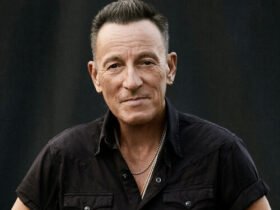Born on November 14, 1840, in Paris, France, Claude Monet was a visionary painter who played a pivotal role in the Impressionist movement. His renowned painting “Impression, Sunrise” (1872) gave the movement its name, underlining Monet’s significant influence. Let’s delve into the life of this extraordinary artist, from his early struggles to his triumphs and the evolution of his distinctive artistic style.
Claude Monet’s Early Life and Artistic Beginnings:
Claude Monet was the second child of Claude Adolphe Monet and Louise Justine Aubrée. After a shift from his father’s spice business to the port city of Le Havre, Monet’s artistic talent emerged early on. His drawing teacher, Jacques François Ochard, recognized his potential, and by the age of 15, Monet was receiving commissions for his drawings.
Artistic Awakening and Parisian Influences:
Monet’s foray into painting began in 1855, thanks to a chance encounter with painter Eugène Boudin. Despite facing financial challenges after his mother’s death in 1857, Monet’s interest in art persisted. A trip to Paris and exposure to art exhibitions fueled his hunger for knowledge. Though initially supported by his father, financial assistance ceased when Monet opted for the Swiss Academy of painting in Paris over the School of Fine Arts in 1859.
Military Service and Artistic Connections:
In 1861, Monet’s studies were interrupted by military service in Algiers, but illness cut his service short. Returning to Paris in 1862, he joined painter Charles Gleyre’s workshop, where he formed friendships with artists like Alfred Sisley, Pierre Auguste Renoir, and Frédéric Bazille. This marked a period of artistic exploration and divergence from the conventions of the time.
Love, Loss, and Financial Struggles:
Monet faced personal and financial challenges, including the death of his uncle and rejection from the magistrates for financial aid. In 1866, he met Camille Doncieux, his muse and future wife. Financial difficulties persisted, leading Monet to seek help from relatives, even temporarily separating from Camille.
The Evolution of Style and Recognition:
After the Franco-Prussian War and a stint in London, Monet’s art underwent a radical transformation. His style embraced quick brush strokes, dynamic figures, and a keen focus on light and shadow. Despite facing adversity, Monet’s works gained recognition, thanks in part to the support of art dealer Paul Durand Ruel.
Later Years and Legacy:
Returning to Paris in 1871, Monet married Camille and settled in Argenteuil. Over the years, he continued to exhibit his works, travel, and experiment with new techniques. In his later years, deteriorating eyesight led to a donation of paintings to the state. After a successful eye surgery in 1923, Monet’s health declined, and he passed away on December 5, 1926, in Giverny.
Conclusion:
Claude Monet’s life was a tapestry of artistic innovation, personal challenges, and resilience. His legacy endures through his groundbreaking contributions to the Impressionist movement, leaving an indelible mark on the world of art.
FAQ:
Q1: What is Claude Monet best known for?
A1: Claude Monet is best known for his role in the Impressionist movement, particularly for his painting “Impression, Sunrise” (1872), which inspired the movement’s name. His innovative use of color, light, and quick brush strokes revolutionized the art world.
Q2: How did Monet’s personal life influence his art?
A2: Monet’s personal life, including financial struggles and the loss of loved ones, often influenced the themes and emotions in his art. His relationship with Camille Doncieux, his muse and later wife, is reflected in many of his works.
Q3: What challenges did Monet face during his career?
A3: Monet faced financial difficulties, rejection from art institutions, and personal losses. The Franco-Prussian War and subsequent political turmoil also impacted his life, leading him to seek refuge in London.
Q4: How did Monet’s artistic style evolve over the years?
A4: Monet’s style evolved from early works reflecting societal conventions to the radical approach of the Impressionist movement. His later works are characterized by quick brush strokes, dynamic figures, and a profound connection to light and nature.
Q5: What is the significance of Monet’s “Impression, Sunrise”?
A5: “Impression, Sunrise” is a pivotal work that not only encapsulates Monet’s innovative approach to painting but also inspired the name of the Impressionist movement. It remains a symbol of artistic rebellion and a testament to Monet’s lasting impact on art history.






Leave a Reply